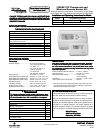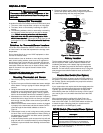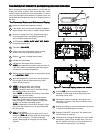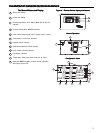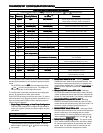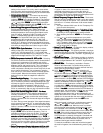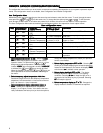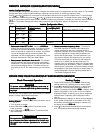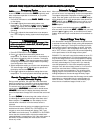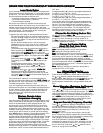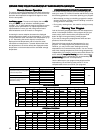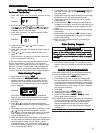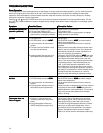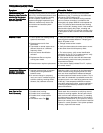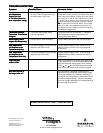
15
SymptomSymptom
SymptomSymptom
Symptom
Furnace Inducer Fan,Furnace Inducer Fan,
Furnace Inducer Fan,Furnace Inducer Fan,
Furnace Inducer Fan,
Blower or Heat Turns OnBlower or Heat Turns On
Blower or Heat Turns OnBlower or Heat Turns On
Blower or Heat Turns On
with No Call for Heat orwith No Call for Heat or
with No Call for Heat orwith No Call for Heat or
with No Call for Heat or
does not Turn Off whendoes not Turn Off when
does not Turn Off whendoes not Turn Off when
does not Turn Off when
Call for Heat EndsCall for Heat Ends
Call for Heat EndsCall for Heat Ends
Call for Heat Ends
Antenna + FaultAntenna + Fault
Antenna + FaultAntenna + Fault
Antenna + Fault
Temperature DifferenceTemperature Difference
Temperature DifferenceTemperature Difference
Temperature Difference
between Thermostatbetween Thermostat
between Thermostatbetween Thermostat
between Thermostat
and Remote Locationand Remote Location
and Remote Locationand Remote Location
and Remote Location
Heat, Cool or FanHeat, Cool or Fan
Heat, Cool or FanHeat, Cool or Fan
Heat, Cool or Fan
Runs ConstantlyRuns Constantly
Runs ConstantlyRuns Constantly
Runs Constantly
Possible CausePossible Cause
Possible CausePossible Cause
Possible Cause
In power stealing mode (RC/PS Switch
set to PS), the thermostat draws a small
amount of power through the heating
circuit to operate. Some furnace
systems using high impedance input
electronic modules may react to the
current draw and actuate system
components.
1. Loss of power from heating/cooling
system to thermostat.
2. Remote sensor too far from
thermostat.
3. Thermostat or remote sensor set to
different channels or a different
frequency offset.
4. Incorrect sensor identification
selected.
5. Replacement Sensor requires
running learn mode.
6. Remote sensor requires replacement.
1. Improper system sizing or improper
heating and cooling distribution
between areas.
2. An uneven change in occupancy
level, sun load or conditioned space
activities (cooking, washing dishes,
showers, etc.) between the areas.
1. Possible short in wiring.
2. Possible short in thermostat.
3. Possible short in heat/cool/fan
system.
4. FAN Switch set to Fan
ONON
ONON
ON.
Corrective ActionCorrective Action
Corrective ActionCorrective Action
Corrective Action
1. Add a common connection from the system
transformer to the "C" terminal on the thermostat
and set the RC/PS switch to RC.
2. If the system has a standard cooling contactor
and no common connection is available at the
thermostat, clip jumper W25-W1 and separate the
ends. This prevents the thermostat from drawing
power from the W1 (heating) circuit. If the condition
persists after clipping the jumper, a heating and
cooling service person can install an isolation relay
to the system or add a common wire as mentioned
above.
1. Verify the thermostat is operating on AC power by
removing the thermostat batteries. If display goes
blank, AC power is lost.
2. Change remote sensor location.
3. Verify the thermostat and remote sensor are set
to the same channel and frequency offset.
4. For indoor sensor, verify sensor identification
selected is A, B or C. For an outdoor sensor, verify
the sensor identification selected is O.
5. If the sensor did not come with this thermostat
from the factory, perform the learn procedure for
thermostat and sensor.
6. If the sensor display indicate E0 or E1, replace
the remote sensor.
Selecting a high or low priority for the thermostat or
sensor location during program periods can help
even out minor temperature imbalances between
the thermostat and remote sensor locations. This is
also useful for scheduled or predictable events like
occupancy level or sun load during particular times
of the day. If the temperature difference remains
large after assigning priorities, system modification
or zoning may be necessary to balance the tem-
perature distribution.
Check each wire connection to verify they are not
shorted or touching together. No bare wire should
stick out from under terminal screws. Try resetting
the thermostat as described above. If the condition
persists the manufacturer of your system or service
person can instruct you on how to test the Heat/Cool
system for correct operation. If the system operates
correctly, replace the thermostat.
TROUBLESHOOTINGTROUBLESHOOTING
TROUBLESHOOTINGTROUBLESHOOTING
TROUBLESHOOTING



